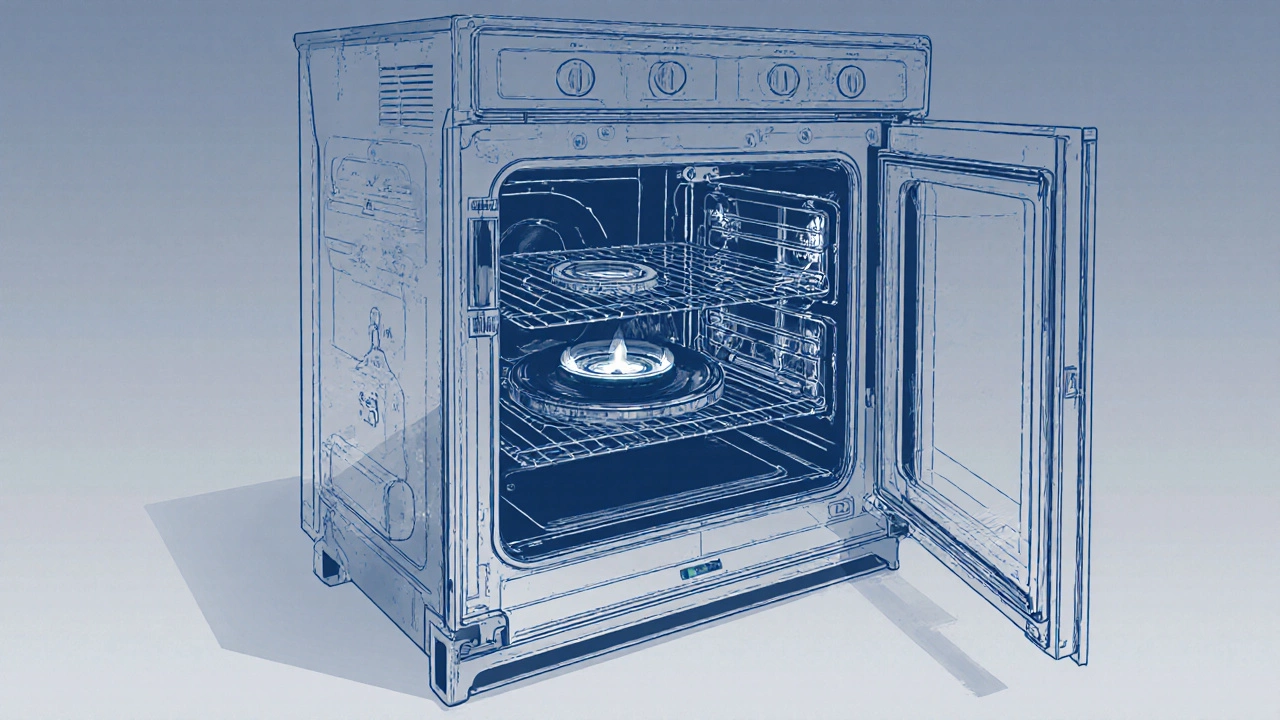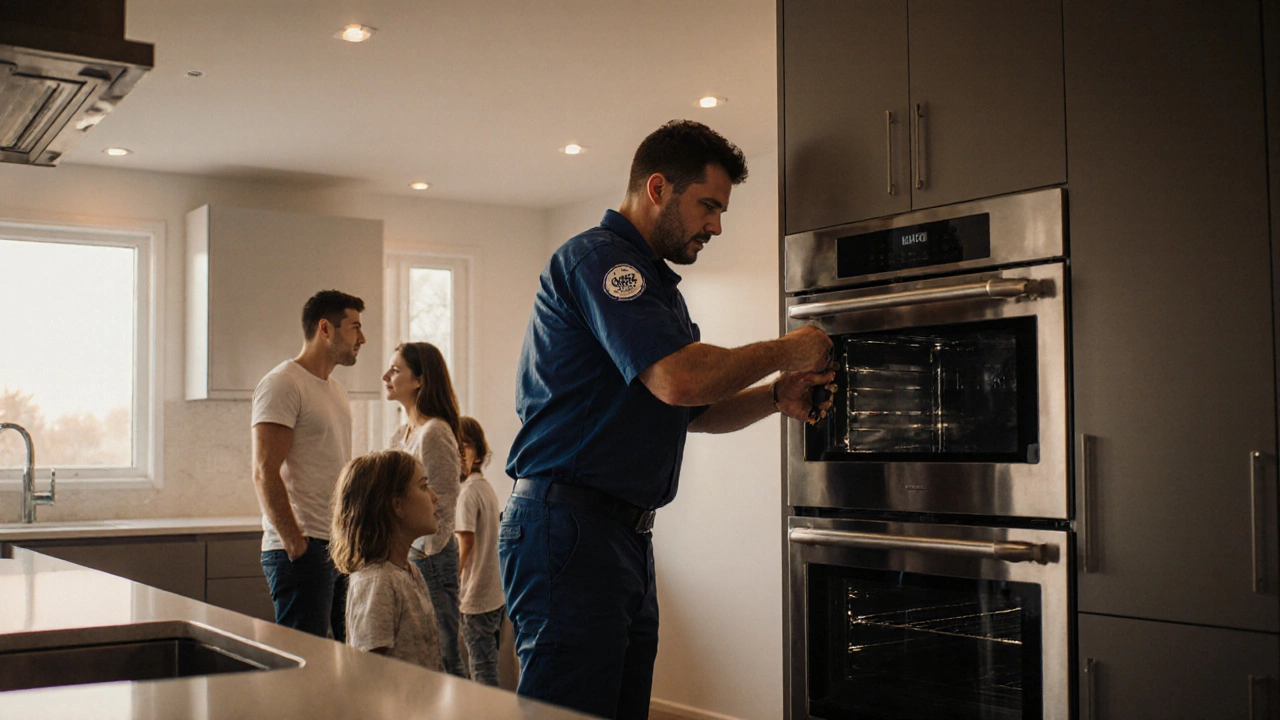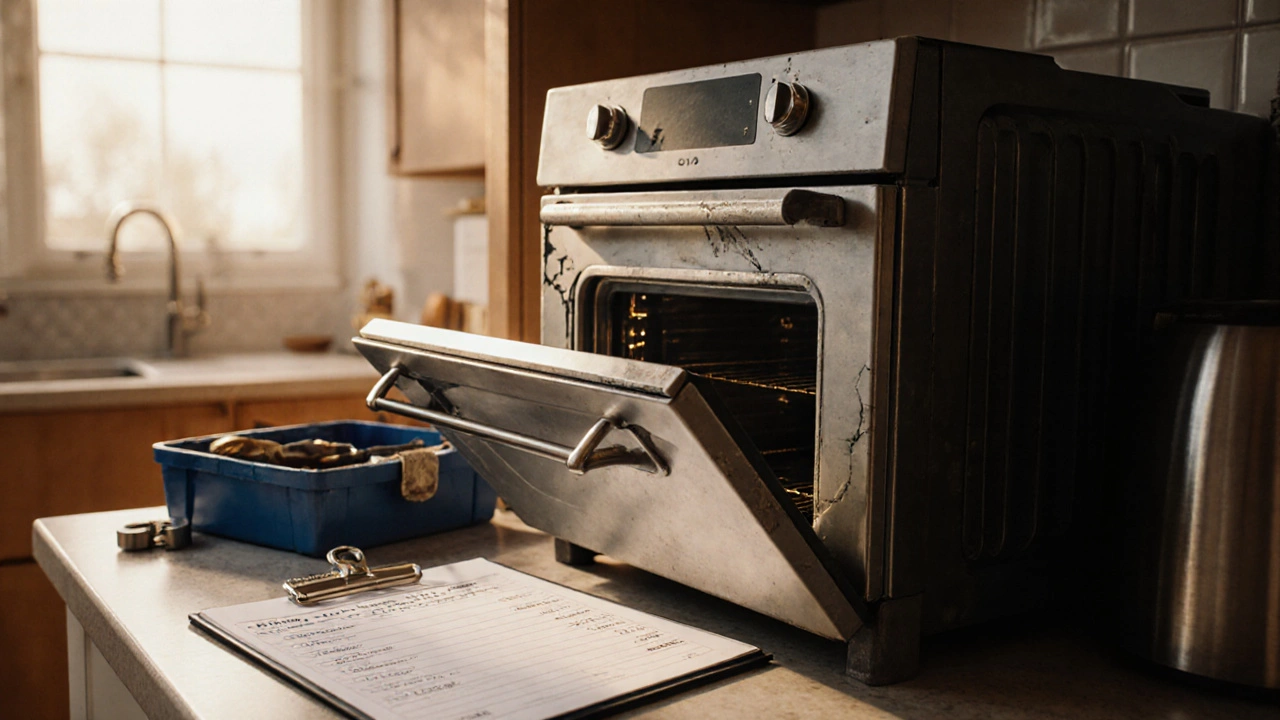TL;DR
- If your gas oven is under 7years old and the fault costs under NZ$300 to fix, repair is usually cheaper.
- Major component failures (ignitor, gas valve) often cost NZ$300‑$600; weigh this against a new oven’s energy‑saving benefits.
- Safety issues - gas leaks or faulty flame sensors - demand immediate professional attention.
- Consider replacement when repair costs exceed 50% of a new oven’s price or the unit is inefficient.
- Choose a certified Professional Technician with gas‑appliance credentials.
Why the Decision Isn’t Just About Price
When you ask, "Is it worth fixing a gas oven?" you’re really juggling three things: the out‑of‑pocket repair bill, the risk of future breakdowns, and how the oven fits into your home’s energy plan. In NewZealand, the average cost to fix a common fault sits between NZ$150 and NZ$500. A brand‑new gas oven, mid‑range, runs about NZ$1,200‑$1,500. But the real calculus includes hidden costs - wasted gas, downtime, and the safety of your family.
Typical Faults That Trigger a Repair Call
Most gas ovens fail for one of four reasons. Knowing the culprit helps you estimate the price tag before the technician arrives.
- Ignitor failure - the spark that lights the gas. Replacement runs NZ$120‑$250.
- Thermostat or temperature sensor gone bad - leads to uneven baking. Part + labour ~NZ$180‑$350.
- Gas Valve leakage or stuck open - a serious safety issue. Fixes often exceed NZ$300.
- Door Seal wear - causes heat loss and longer cooking times. Usually a NZ$80‑$150 replacement.
Minor problems like a faulty oven light or a crooked rack can be DIY‑fixed for under NZ$50, but any gas‑related component should be handled by a qualified pro.
Safety First: Gas Regulations in NewZealand
Gas appliances are governed by the NewZealand Gas Act and must be serviced by a licensed installer. A faulty gas valve or a cracked ignitor can create an undetectable leak, turning a simple fix into a hazard. Always check that the technician holds a Gasfitter licence (GAS‑C). If you smell gas after a repair, turn off the supply, ventilate the area, and call emergency services immediately.
Repair vs. Replace: The Numbers at a Glance
| Factor | Repair | Replace |
|---|---|---|
| Typical Cost (NZ$) | 150‑600 | 1,200‑1,500 |
| Estimated Lifespan After Fix | 3‑5years | 10‑15years |
| Energy Efficiency | Older models - 70‑80% of new units | Modern gas ovens - up to 95% efficiency |
| Downtime | 1‑3days (depending on parts) | 1‑2days (delivery & install) |
| Safety Risk | Medium - depends on fault severity | Low - new unit meets latest standards |
Use the table as a quick reference. If the repair cost creeps above 50% of a new oven’s price, it’s often smarter to replace, especially if your current model is over eight years old.

Decision Checklist: When to Say Yes to Repair
- Age less than 7years.
- Fault diagnosed as a single‑component failure (ignitor, door seal).
- Repair quote under NZ$300.
- Appliance still meets current NewZealand gas safety standards.
- You have a reliable warranty or service plan that covers parts.
Decision Checklist: When to Opt for Replacement
- Appliance age exceeds 8‑10years.
- Multiple components need fixing or the issue is systemic.
- Repair estimate over NZ$600 (roughly 40‑50% of a new unit).
- Current oven’s energy rating is low (e.g., 70% efficiency).
- Frequent breakdowns cause prolonged kitchen downtime.
Finding a Qualified Professional Technician
Not all handymen can work with gas. Look for these credentials before you sign a quote:
- Valid Gasfitter licence (check the NZ Register of Gas Installers).
- Insurance covering accidental gas leaks.
- Positive local reviews - homeowners often mention punctuality and clean-up.
- Transparent pricing - fixed labour rates plus clear part costs.
Ask for a written estimate that breaks down labour, parts, and any travel fees. A reputable tech will also explain how long the fix should last.
DIY? When It Makes Sense and When It Doesn’t
Simple tasks like cleaning the oven door seal or replacing a burnt‑out light bulb can be done safely with a screwdriver and a fresh bulb. However, anything that involves the gas line, ignitor, or internal wiring should stay in the hands of a licensed professional. Attempting a DIY gas‑valve repair can void insurance and break the law.
Next Steps & Quick Troubleshooting
Here’s a short action plan if your oven is acting up:
- Turn off the gas supply at the cylinder or wall valve.
- Check that the oven’s power cord is securely plugged in.
- Inspect the door seal for cracks; replace if needed.
- Run a self‑diagnostic (many modern ovens flash error codes - note the pattern).
- Call a licensed Professional Technician with the error code and details.
Document the symptoms and any error codes; this speeds up the quote and reduces call‑out time.

Frequently Asked Questions
How much does a typical gas oven repair cost in NewZealand?
Most single‑component repairs-like an ignitor or door seal-run between NZ$150 and NZ$350. Major gas‑valve work can exceed NZ$600.
Is it safe to use a gas oven after a minor repair?
Yes, if the repair was performed by a licensed gasfitter and the oven passed a post‑repair safety test. Always sniff for gas before you light it, and watch for unusual flame patterns.
When should I replace my gas oven instead of repairing it?
If the repair estimate is more than half the price of a comparable new oven, the unit is over eight years old, or it consistently fails energy efficiency tests, replacement is the smarter choice.
Do I need a licence to repair a gas oven myself?
Yes. NewZealand law requires a Gasfitter licence for any work that alters the gas supply or internal gas‑related components. Unlicensed work can void insurance and attract penalties.
What are the energy‑efficiency benefits of a new gas oven?
Modern gas ovens achieve up to 95% thermal efficiency, meaning less gas is needed for the same cooking results. This can shave NZ$50‑$100 off your annual gas bill compared to a 70‑80% efficient older model.

I am an expert in the services industry with a focus on appliance repair. My passion lies in understanding how things work and educating others in simple, engaging ways. This enthusiasm fuels my writing, where I delve into topics around appliance maintenance and troubleshooting. I aim to make these subjects clear and accessible to all readers.